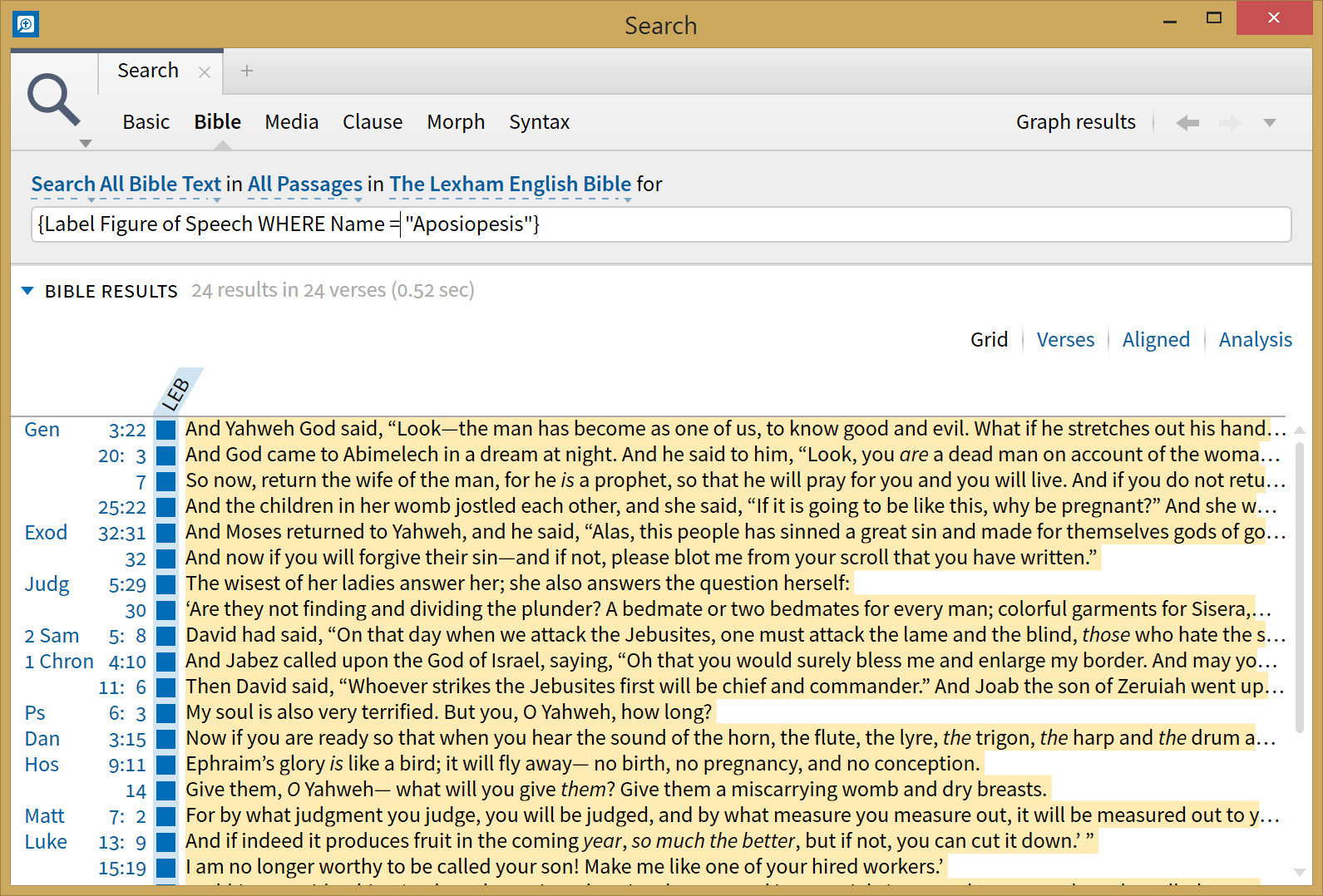
Yes, that's a big hint that the next type of cross-reference is figure of speech. Admittedly, these often do not require multiple references but often to get the full import of the figure requires cross-references in the same sense that vocabulary and images require cross-references. And to really develop a sense of the connotations of the original language, an analytic approach can be useful e.g. for all figures of comparison, what attributes are being treated as the same; what attributes are different? For personification what elements are useful for personification and which never appear?
Spirit and Truth has an informative article on figures of speech in Bible interpretation from which the diagram above was taken.
1. Unfortunately Logos does not yet have comprehensive support for figures of speech. However, they have recently added the ability to search for figures based on the examples in Bullinger, Ethelbert William. Figures of Speech Used in the Bible. London; New York: Eyre & Spottiswoode; E. & J. B. Young & Co., 1898.
If you have the book by Bullinger (here: https://www.logos.com/product/1951/figures-of-speech-used-in-the-bible-explained-and-illustrated) you know that he essentially provides a catalogue of figures. Each article has a title, and a host of references to the Bible within the article.
This dataset takes the references within the article and allows you to search for them by name. It is important to note that this is not a comprehensive analysis of figures of speech in the Bible, it is essentially a catalogue of the copious examples Bullinger himself uses in his book to illustrate the figure of speech.
Take, for example, his article on Aposiopesis:

If you want to look at all the examples Bullinger used, with the Figures of Speech dataset, you can now do this:

This information presently surfaces in the information window (I believe it will be available via right-click with a future beta).You could mix the Label search and look for other types of information within the references that are labelled.
It can be searched either by the Description or Name properties. Here's an example of what shows in the Information window when you hover/click somewhere in Matt 7:2:

Hope it helps.
What is it?
For over 100 years, countless biblical interpreters have relied on Bullinger's Figures of Speech Used in the Bible: Explained and Illustrated. But its sheer breadth makes it difficult to use. We've transformed this classic resource into a searchable dataset so you can find everywhere a biblical author uses, for instance, metonymy—a figure of speech where a name or noun is used in place of another. Search for any figure of speech addressed in Bullinger and find relevant biblical passages.
How does it work?
The Figures of Speech dataset allows you to search for everywhere Bullinger has categorized a biblical reference as a figure of speech. You can access this data through a Bible search with the following search parameters:
The figures of speech that are searchable can be found in the Table of Contents of Bullinger's Figures of Speech resource here.

Where can I learn more?
We do have a number of resources that include references to rhetorical devices which we may add as user labels as we encounter them. Chiasm and type scenes have solid resources available in dead tree format.
If you have interest in this area you should also be familiar with BYU's Silva Rhetoricae: The Forest of Rhetoric
2. While Logos has only began to develop support for figures of speech/rhetorical devices, they have no support for pericope parallels which you must manually find in your Bibles or Study Bibles.



